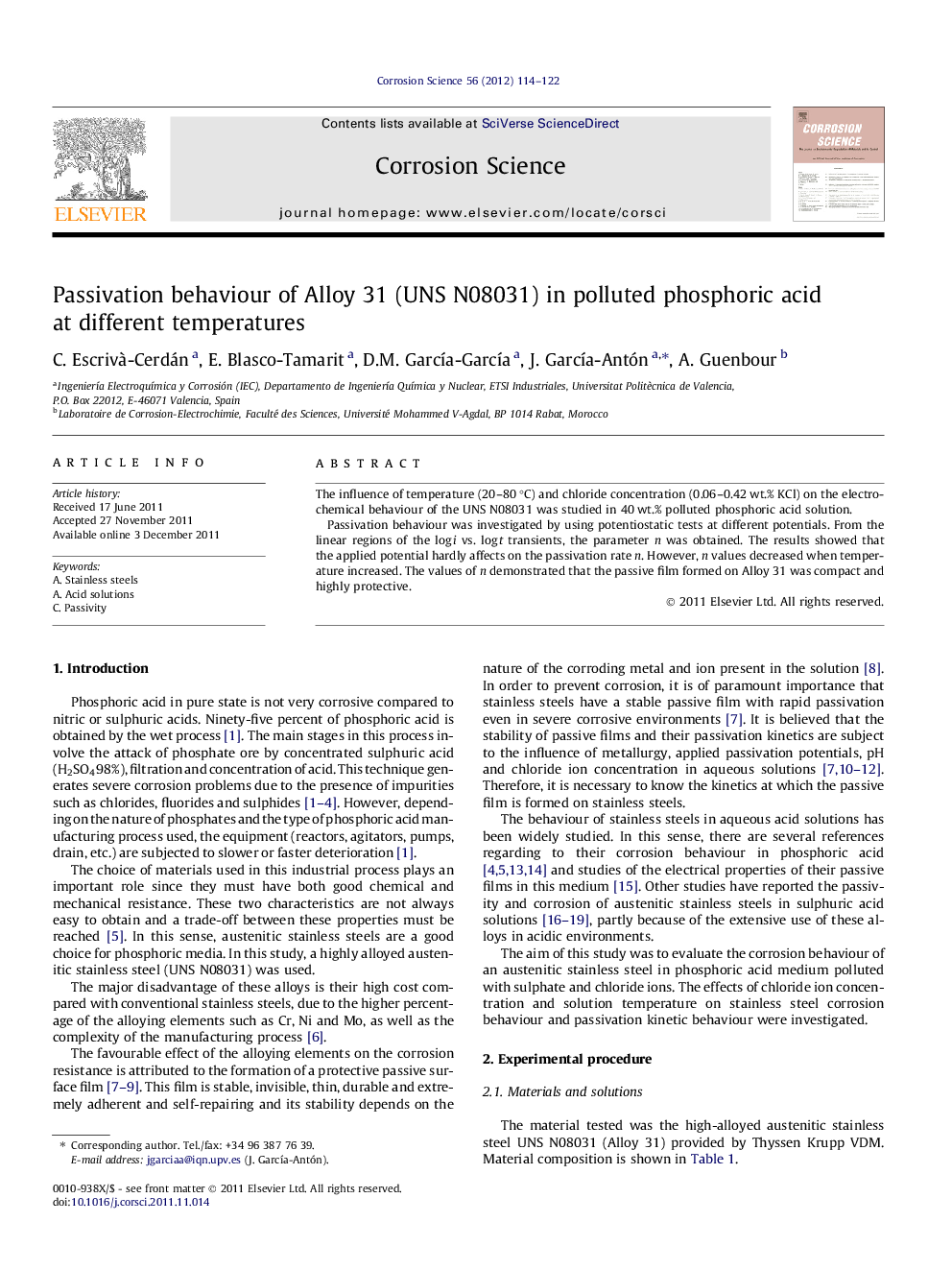| Article ID | Journal | Published Year | Pages | File Type |
|---|---|---|---|---|
| 1469879 | Corrosion Science | 2012 | 9 Pages |
The influence of temperature (20–80 °C) and chloride concentration (0.06–0.42 wt.% KCl) on the electrochemical behaviour of the UNS N08031 was studied in 40 wt.% polluted phosphoric acid solution.Passivation behaviour was investigated by using potentiostatic tests at different potentials. From the linear regions of the log i vs. log t transients, the parameter n was obtained. The results showed that the applied potential hardly affects on the passivation rate n. However, n values decreased when temperature increased. The values of n demonstrated that the passive film formed on Alloy 31 was compact and highly protective.
► Potentiodynamic polarisation curves were characterised by a very wide range of passivity. ► The passivation index, n decreased in the temperature range of 20–80 °C. ► Applied potentials between 300 and 800 mVAg/AgCl have no effect on the parameter n. ► When applied potential is close to Eb (≈1000 mVAg/AgCl) the passivity is worst. ► Alloy presents high corrosion resistance in solutions similar to industrial process.
